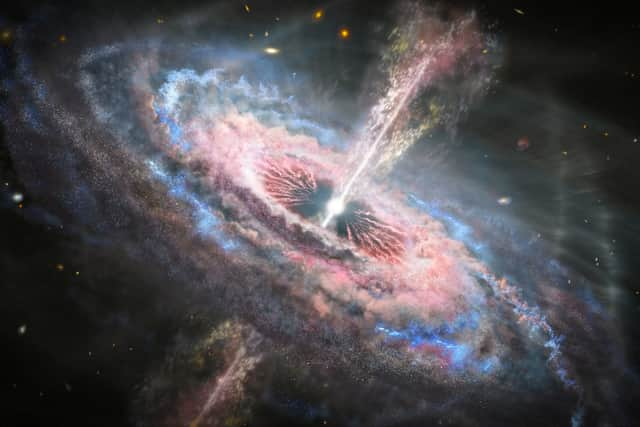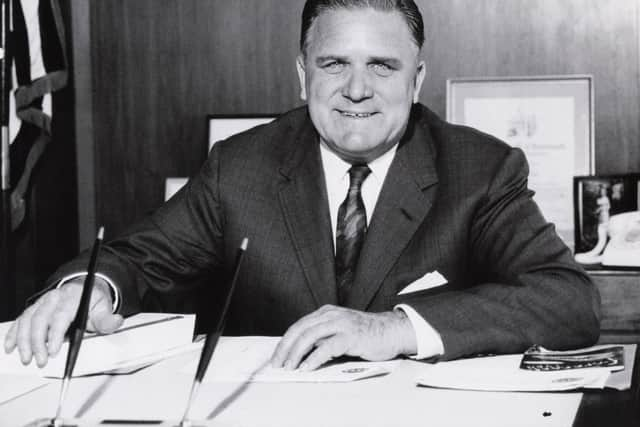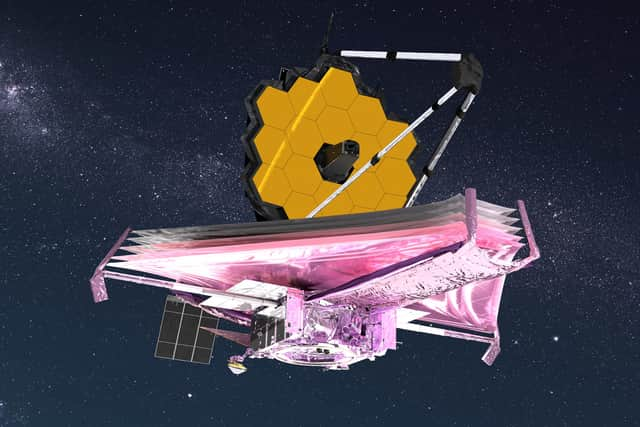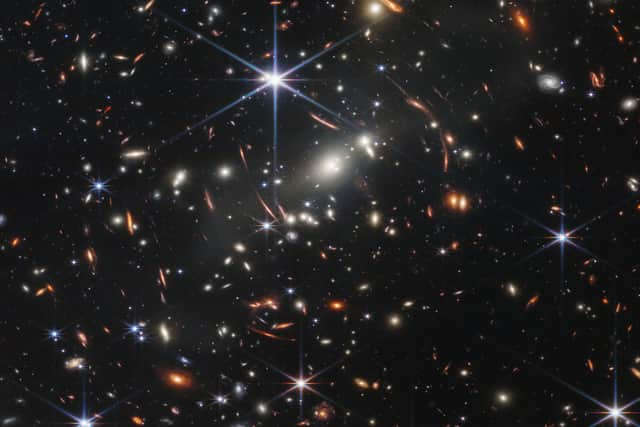James Webb Telescope: when did NASA’s Hubble successor launch, what is its mission, what images has it taken?
and live on Freeview channel 276
Launched on Christmas Day 2021, the £8 billion mission hopes to answer some of the most fundamental questions we have about the universe.
Advertisement
Hide AdAdvertisement
Hide AdIt will act as a replacement for the Hubble Space Telescope, which has provided humanity with some of the most iconic shots of the cosmos.
So what exactly will the James Webb Telescope show us - and what is its first image?


What is the James Webb Space Telescope?
Developed over the past 20 years, the James Webb has been designed to build upon the groundbreaking discoveries of the Hubble Space Telescope.
The spacecraft is named after James E. Webb - the man who ran NASA between February 1961 and October 1968 when the US space agency was preparing to land the first humans on the moon.
Advertisement
Hide AdAdvertisement
Hide AdThe James Webb Telescope will have a greater focus on the infrared wavelength than Hubble - a spectrum that’s important for peering through gas and dust clouds to see distant objects.


It boasts a mirror that is nearly 60 times bigger than previous infrared telescopes and promises to provide us with Hubble’s image resolution, albeit with an even greater sensitivity.
The US space agency described it as “a giant leap forward in our quest to understand humanity’s place in the great cosmic expanse”.
The Planetary Society said the entire project, from construction through to the end of its active service, will cost around $10.8bn (£7.97bn).


What will James Webb be able to show us?
Advertisement
Hide AdAdvertisement
Hide AdNASA said it hopes James Webb will provide a new view of the universe and will capture humanity’s imagination with major discoveries.
Essentially, it will be able to look further back in time than Hubble.
Because radiation, like light, takes time to travel across space to reach the earth, some of the most distant objects we can see are also some of the oldest objects in the universe.


While Hubble can make out the beginnings of some of the more modern galaxies, James Webb should be able to see the birth of the very first galaxies.
Advertisement
Hide AdAdvertisement
Hide AdIt might also be able to capture images of some of the universe’s first stars, which are believed to have been formed after the big bang almost 14 billion years ago.
The telescope will also be able to look deep into our own galaxy, with scientists hoping to catch a better glimpse of the black hole that sits at the centre of the Milky Way.
And we should also get a better view of planets, both within our solar system and beyond.
What did first James Webb Telescope image show?
The first official image taken by the James Webb Telescope shows what NASA says is the “deepest” and most detailed image of space ever photographed.
Advertisement
Hide AdAdvertisement
Hide AdWhat might just look like a group of stars is actually a galaxy cluster called SMACS 0723 as it appeared 4.6 billion years ago.
It means this image shows a time before the Earth existed - as our home planet is ‘only’ 4.5 billion years old.
The photograph is a composite of images taken at different wavelengths, with the galaxy cluster’s gravity acting as something akin to a magnifying glass.
This effect means some of the galaxies in the picture are actually even further away from Earth.
Advertisement
Hide AdAdvertisement
Hide AdSpeaking about the historic image, NASA administrator Bill Nelson said it showed “just a tiny sliver of the vast universe”.


He said: “Webb’s First Deep Field is not only the first full-colour image from the James Webb Space Telescope, it’s the deepest and sharpest infrared image of the distant Universe, so far.
“This image covers a patch of sky approximately the size of a grain of sand held at arm’s length.”
More images are set to be released at 2.45pm on Tuesday 12 July.
When did the James Webb Telescope launch?
Advertisement
Hide AdAdvertisement
Hide AdThe telescope blasted off from French Guiana on the northeastern coast of South America on Christmas Day 2021.
Since its launch, the James Webb Telescope has traveled a million miles to what is known as the second Lagrange point - one of five areas in deep space where the gravitational forces of the sun and the earth balance out to allow for a near-constant orbit.
This part of space is directly ‘behind’ earth as it is viewed from the Sun and is useful for these sorts of missions because it reduces the amount of fuel needed to keep a spacecraft in a stable orbit.


Is this the end for Hubble?
Named after Edwin Hubble - an American astronomer whose work formed the basis of the big bang theory - the Hubble Space Telescope was launched in 1990 to investigate everything from black holes to planets around other stars.
Advertisement
Hide AdAdvertisement
Hide AdIt does this by scanning across spectrums of electromagnetism, from visible light to infrared and ultraviolet.
Thanks to its instruments, Hubble has been able to peer inside cosmic clouds of gas and dust to reveal older parts of the universe, as well as providing us with our first glimpses of alien planets and galaxies far beyond our Milky Way.
The result has been some of the most iconic images we have of the universe, including the ‘Pillars of Creation’ shot which shows giant fingers of gas in a nursery of young stars.
An earth-based telescope cannot achieve the same results because of the level of interference from light and other signals on our planet.
Advertisement
Hide AdAdvertisement
Hide AdEven after James Webb becomes fully operational, Hubble will be kept going due to its ultraviolet capabilities.
Indeed, NASA says Hubble is more scientifically productive today than it has been at any time in its past.
And given it sits just 340 miles above the earth, it could still be serviced and enhanced if its mission can keep receiving funding.
Comment Guidelines
National World encourages reader discussion on our stories. User feedback, insights and back-and-forth exchanges add a rich layer of context to reporting. Please review our Community Guidelines before commenting.
